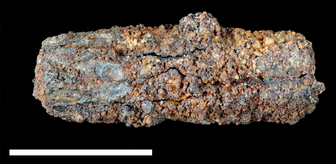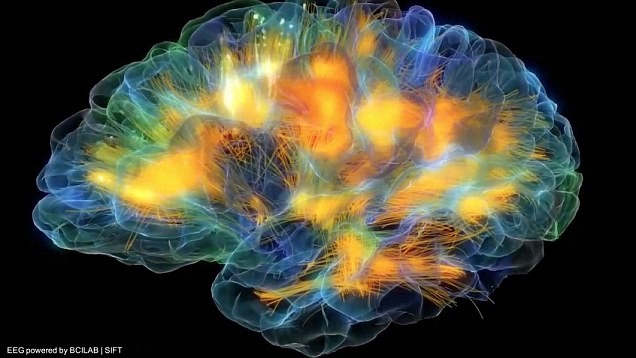It is the light bearer that brings light. God said, “Let there be light,” and there was phosphorus.
In many of my articles, I have spoken about phosphorus. A chemical element present in all life and that is the Alpha and Omega of all nature. A light energy that is a chemical making our very own DNA fire.
A new study by a team of scientists from the University of South Florida revealed that meteorites had carried phosphorus to earth, which may have led to creating the earliest life forms that came to Earth.
(Source University of South Florida) – Scientists may not know for certain whether life exists in outer space, but new research from a team of scientists led by a University of South Florida astrobiologist now shows that one key element that produced life on Earth was carried here on meteorites.
In an article published in the new edition of the Proceedings of the National Academies of Sciences, USF Assistant Professor of Geology Matthew Pasek and researchers from the University of Washington and the Edinburg Centre for Carbon Innovation, revealed new findings that explain how the reactive phosphorus that was an essential component for creating the earliest life forms came to Earth.
The scientists found that during the Hadean and Archean eons – the first of the four principal eons of the Earth’s earliest history – the heavy bombardment of meteorites provided reactive phosphorus, that when released in water could be incorporated into prebiotic molecules. The scientists documented the phosphorus in early Archean limestone, showing it was abundant some 3.5 billion years ago.
The scientists concluded that the meteorites delivered phosphorus in minerals that are not seen on the surface of the earth, and these minerals corroded in water to release phosphorus in a form seen only on the early earth.
The discovery answers one of the key questions for scientists trying to unlock the processes that gave rise to early life forms: Why don’t we see new life forms today?
“Meteorite phosphorus may have been a fuel that provided the energy and phosphorus necessary for the onset of life,” said Pasek, who studies the chemical composition of space and how it might have contributed to the origins of life. “If this meteoritic phosphorus is added to simple organic compounds, it can generate phosphorus biomolecules identical to those seen in life today.”
Pasek said the research provides a plausible answer: The conditions under which life arose on the earth billions of years ago are no longer present today.
“The present research shows that this is indeed the case: Phosphorus chemistry on the early earth was substantially different billions of years ago than it is today,” he added.
The research team reached their conclusion after examining earth core samples from Australia, Zimbabwe, West Virginia, Wyoming and in Avon Park, Florida
Previous research had shown that before the emergence of modern DNA-RNA-protein life that is known today, the earliest biological forms evolved from RNA alone. What has stumped scientists, however, was understanding how those early RNA –based life forms synthesized environmental phosphorus, which in its current form is relatively insoluble and unreactive.
Meteorites would have provided reactive phosphorus in the form of the iron–nickel phosphide mineral schreibersite, which in water released soluble and reactive phosphite. Phosphite is the salt scientists believe could have been incorporated into prebiotic molecules.
Of all of the samples analyzed, only the oldest, the Coonterunah carbonate samples from the early Archean of Australia, showed the presence of phosphite, Other natural sources of phosphite include lightning strikes, geothermal fluids and possibly microbial activity under extremely anaerobic condition, but no other terrestrial sources of phosphite have been identified and none could have produced the quantities of phosphite needed to be dissolved in early Earth oceans that gave rise to life, the researchers concluded.
The scientists said meteorite phosphite would have been abundant enough to adjust the chemistry of the oceans, with its chemical signature later becoming trapped in marine carbonate where it was preserved.
It is still possible, the researchers noted, that other natural sources of phosphite could be identified, such as in hydrothermal systems. While that might lead to reducing the total meteoric mass necessary to provide enough phosphite, the researchers said more work would need to be done to determine the exact contribution of separate sources to what they are certain was an essential ingredient to early life.
###
The University of South Florida is a high-impact, global research university dedicated to student success. USF ranks 50th in the nation for federal expenditures in research and total expenditures in research among all U.S. universities, public or private, according to the National Science Foundation. Serving more than 47,000 students, the USF System has an annual budget of $1.5 billion and an annual economic impact of $3.7 billion. USF is a member of the Big East Athletic Conference.
SOURCE: USF

Moe is the founder of GnosticWarrior.com. He is a father, husband, author, martial arts black belt, and an expert in Gnosticism, the occult, and esotericism.









http://www.astronomy.com/en/News-Observing/News/2004/08/Phosphorus%20from%20meteorites.aspx
This article talks about Jupiter’s role in the process
Ever read any A.E. Waite or Eliphaz Levi? Read anything about old gnosticism? Or the astral light or the great work or anything?
Please remove me from your mailing list.
Yes I have and they are both my favorite authors on the subject. You have to unsubscribe yourself since you subscribed to this blog.